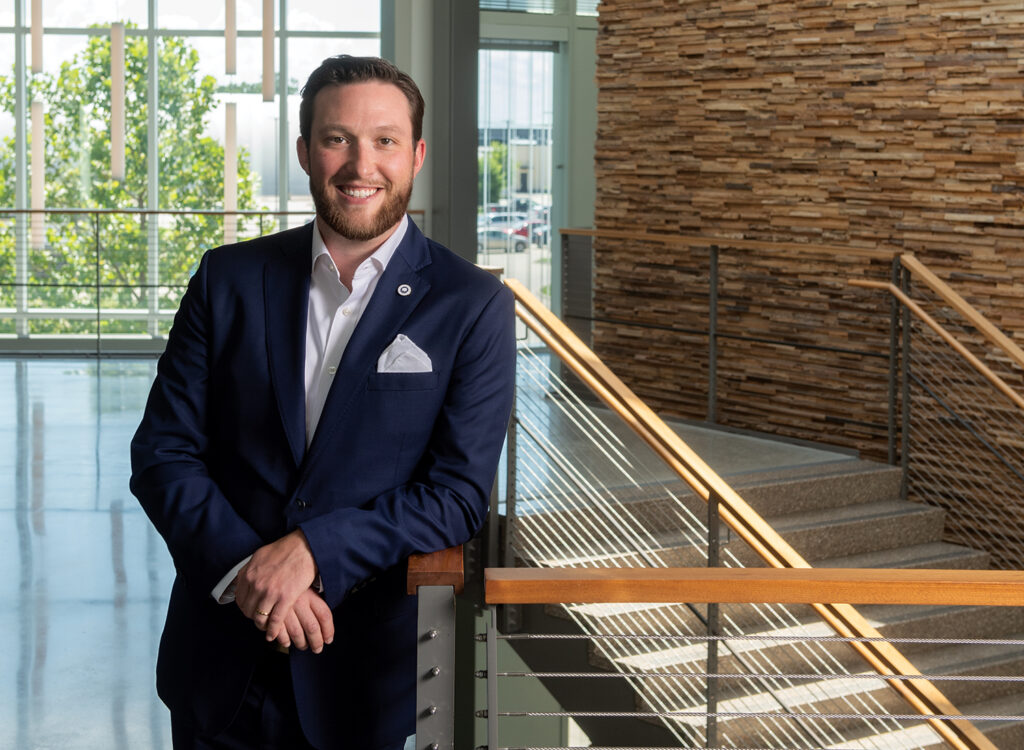How can we move the needle on Iowa’s well-being-ranking?
Cultural shift to a healthier state will require long-term effort, officials say

JOE GARDYASZ Mar 6, 2015 | 12:00 pm
11 min read time
2,726 wordsBusiness Record Insider, Health and WellnessHow’s your well-being? Are you feeling happier, healthier, more connected, more financially secure and more purposeful than you were four years ago?
Although the answers to those questions will be quite different from one individual to the next across Iowa, some nationwide surveys that take the pulse of Americans’ well-being say that Iowans are losing ground compared with other states.
Four years ago, the Healthiest State Initiative was formed with the ambitious goal of making Iowa the healthiest state in the nation by 2016, as measured by the Gallup/Healthways Well-Being Index.
After having ranked among the top 10 states in overall well-being for two years in a row, Iowa slipped from 10th to 16th in the latest Gallup/Healthways Well-Being released last month. By comparison, the state ranked 19th when it began the effort in 2011.
Iowans’ total well-being score, as measured by the Gallup/Healthways survey, has remained relatively constant over the past three years, but the state is getting leapfrogged by other states, which have achieved gains in their well-being scores. On the zero-to-100 scale, Iowa most recently received an overall score of 62.2. The highest-ranked state, Alaska, had a score of 64.7.,
A separate national study by UnitedHealth Foundation that also compares Iowa’s health status to that of the rest of the country late last year pegged Iowa at 24th – down from 16th place in 2013.
Health experts from several organizations weighed in on the data for this story, and they point to a number of strengths as well as weaknesses for Iowa’s state of well-being.
The takeaway message: Yes, Iowa has some work to do in some significant areas of well-being, but the state has made significant progress overall in the past four years, and the Healthiest State Initiative is using the data to develop new ways to reach out to Iowa communities, businesses and individuals.
Why is well-being important? According to research conducted by Gallup Inc. and Healthways Inc., a high level of well-being closely relates to key health outcomes, such as lower rates of health-care utilization, workplace absenteeism and workplace performance, change in obesity status and the onset of diseases.
Well-being is also a predictor of business outcomes, such as employee engagement, customer engagement, turnover and workplace safety, which can affect a population’s ability to reach its economic potential.
High well-being is also strongly related to important societal outcomes, such as lower rates of teen pregnancy and crime, as well as higher high school graduation rates and more charitable giving.
Nationally, many aspects of well-being across the United States improved in 2014 to their highest levels since Gallup and Healthways began measuring well-being in 2008. One of the most significant measures, known as life evaluation, reached its highest point last year, according to Galllup/Healthways.
The measure – which asks people to assess their current life situation and compare it with their expected situation five years from now – is a key outcome of well-being and a high-level measure of how people think about and evaluate their lives.
At the same time, however, one of America’s most significant health challenges – obesity – reached its highest point yet in 2014 with 27.7 percent of American adults now having a body mass index higher than 30.
According to Gallup/Healthways, Iowa had the ninth-worst obesity rate among the states. America’s Health Rankings, a separate report produced by UnitedHealth Foundation, ranked Iowa among the worst-performing states – 39th – for its obesity rate, with an estimated 31.3 percent obesity rate among adults.
“I think overall, there is opportunity for improvement; I think we all know that,” said Jami Haberl, who was hired by the Healthiest State Initiative as its executive director in December.
“The biggest thing is recognizing that our society has been changing for years. Our obesity rates have increased across the United States as well as here in Iowa. We didn’t get there overnight; it’s going to take us a long time to change that culture so that we can be a healthier society. So we have a lot of work ahead of us.
“I also think it’s important to recognize that behavior change is a slow process; it doesn’t happen quickly. … But hopefully we can look back in five years and say we’ve made significant progress.”
Environmental factors shape scores
In comparing Iowa’s well-being scores with those of the rest of the nation, Iowans’ overall well-being in the past four years has improved at more than double the rate that Gallup/Healthways has seen nationally, said Dan Witters, director of the Gallup/Healthways Index for Gallup in Omaha.
“If you look at Iowa’s rankings, they’re in a fairly narrow range,” he said. “Iowa was one of only four states that had improved every year since 2010, the first year past the Great Recession.” The only other states that have shown consistent annual improvement have been Montana, Nebraska and Vermont.
Some other states experienced meteoric rises in their rankings on the survey in the past year, which helped push Iowa off the top 10 list. Alaska, for instance, jumped from 16th to the No. 1 spot, and Wyoming leaped all the way from 34th to fourth. On the other hand, North Dakota, which had been at No. 1 in 2013, dropped to 23rd.
Witters surmised that a large influx of construction and oil field workers to North Dakota had a lot to do with its drop, as those populations tend to be less healthy and exhibit less healthy behaviors. Alaska’s and Wyoming’s surges could also be linked to the energy boom, which had initially boosted North Dakota’s scores, and it will be interesting to see whether those higher ranks can be maintained, he said.
A quick analysis by an Iowa State University official versed in statistics found that 30 percent of the states measured had changes in ranking of 10 or more places, while 40 percent were within a range of plus or minus three places.
“I would expect that something in the questions, presentation, scoring or sampling is not completely consistent,” said Mark Imerman, ISU’s director of business and institutional relations. “The objective measures of health care availability and delivery don’t change that fast, and, in most cases, neither do the public budgets that fund them.”
Witter defended Gallup’s methodology and rankings as solidly scientific and valid, but acknowledged that it was unusual to see a jump as large as Wyoming’s 30-place change. The questions and methodology have been extensively studied and published in respected peer-reviewed academic journals, he said.
“Sure, we’re asking (survey respondents) to give their opinions,” he said. “We don’t show up at their home and see if they actually don’t smoke or how much they weigh – we accept the data provided us at face value and report it as such. But every single question has earned its place at the table; if it doesn’t help predict external validated outcomes, it’s not included.”
For example, data from large population samples validate that high well-being workers have fewer unplanned absences, are less likely to quit and have higher levels of performance. “We can extend that out into the community as a whole,” Witters said. “Subjective well-being is a very good predictor of health care utilization rates, high school graduation rates, life expectancy and teen pregnancies.”
Additionally, environmental and community factors can very much influence the upward and downward movement of state rankings, Witters said.
“This instrument was not built to be static,” he said. “On the contrary, it’s built to be very sensitive to local, on-the-ground changes that are happening year to year.” As an example, when the New Orleans Saints won the Super Bowl in 2010, that event had a significant effect on that city’s well-being score. On the flip side, the explosion of the Deepwater Horizon oil rig in April 2010 and the subsequent massive oil spill in the Gulf of Mexico caused significant drops in well-being scores for communities along the coast.
Gallup/Healthways also changed the survey instrument in 2014, replacing about half of the 55 questions with new ones.
The questions that were kept “were the items that did the heaviest lifting in predicting outcomes, while layering in questions about certain aspects of well-being that we did not have,” Witters said.
For instance, some of the new questions ask about social well-being – the extent to which the person who is surveyed says his or her friends and family members provide support and encouragement to be healthy. That area is a particularly weak link for Iowa, which ranked 40th in social well-being.
Iowans also fare very poorly in having someone in their life who encourages them to be healthy. The state ranked 47th in that measure. “That’s something that we didn’t know about the state that we now know, and something that it may want to work upon,” Witters said.
The survey also added questions delving further into workplace satisfaction measures, as well as aspects of satisfaction people have with their communities and how well they feel they fit into their communities. For instance, respondents are now asked whether they’ve received recognition in the past year for volunteering in their community.
Gallup/Healthways asked a set of “bridge” questions in the new survey to approximate the results that states would have seen had they continued to be measured using the previous survey.
In Iowa’s case, its ranking would still have been 16th for this year’s survey, Witters said.
How the Gallup/Healthway scores are determined:
Originally the well-being scores were based on six “domains”:
- Life Evaluation: Present life situation and anticipated life situation.
- Emotional Health: Daily feelings and mental state.
- Work Environment: Job satisfaction and workplace interactions.
- Physical Health: Physical ability to live a full life.
- Healthy Behavior: Engaging in behaviors that affect physical health.
- Basic Access: Feeling safe, satisfied and optimistic within a community.
The Gallup-Healthways scores are based on 500 daily telephone surveys of Americans, with questions ranging from how many sick days a person has taken to how many fruits and vegetables they’ve eaten in the past week, as well as questions revolving around how satisfied the respondents are with their current life situation and their prospects for the future.
In January 2014, the Well-Being Index survey was updated with new questions, based on research that included approximately 2 million surveys of individuals on their perceptions of well-being as well as statistical modeling. The updated survey includes five elements (see box on page 16) , each with its own score on a 0-10 scale.
What doctors say
Dr. Yogesh Shah, associate dean of global health at Des Moines University, said he believes key wellness messages are getting lost in all of the data.
“We have so many groups talking about health and wellness,” he said. “People on the street don’t get all this. They just want to know: ‘How do I live healthier and longer?’ ”
However, four points that Shah advises his patients to improve upon – physical activity, obesity, smoking and consumption of fruits and vegetables – align very well with the areas that the Healthiest State Initiative is addressing.
“If I were looking at a patient’s health and they were not paying attention to these four things, I would work on getting him to become more active,” he said. “Study after study has shown that walking two miles twice a week has reduced diseases such as dementia. And then address eating. So the next time you eat a candy bar, consider: Is it worth the extra block I would have to walk to burn these calories? And if you make 50 percent of your plate fruits and vegetables – with those two habits – you will start living healthier.”
Though the Healthiest State Initiative in late 2012 announced a “Focus Five” priority areas that the state should concentrate on, “I’m not seeing constant messaging on that area since that announcement,” Shah said. Additionally, people need constant support through an environment that encourages them to maintain their health.
“You may have heard the expression ‘Our health is our ZIP code,’ ” he said. “If I don’t have access to fresh fruits and vegetables, the first thing I’m going to buy is fast food because it’s cheap and available. And we need to create places where people can walk and make the system available statewide.”
As part of his geriatrics practice, Shah conducts a memory clinic. He persuaded one of his patients, a 77-year-old with mild cognitive impairment who had been opposed to physical activity all his life, to get out to the gym. “He says it’s helping him,” Shah said. “Once people see the benefit after a few weeks, then it becomes a habit.”
In the America’s Health Rankings Report, which in December placed Iowa at 24th healthiest, the state’s ranking went down largely because of increases in the percentage of Iowans who are obese and who are not physically active. And though the percentage of smokers in the state has decreased since the early 1990s, it hasn’t decreased by as much as the percentages in other states have, said Dr. Charles Ettelson, market medical director for the UnitedHealthcare Foundation. After 29 years in private practice in the St. Louis area as a plastic surgeon, Ettleson joined the foundation a year and a half ago to work with physicians and health facilities.
One factor that the UnitedHealth report highlighted as a weak spot for Iowa was a prevalence of binge drinking. Iowa ranks near the bottom at 47th in the country, with more than 21 percent of the adult population reporting binge drinking in that report.
“The good news is that in some ways the biggest factors are based on behaviors, and those are changeable,” Ettelson said. “So if smoking and binge drinking are ranked poorly right now, they can be changed rather readily. Also, it’s fairly easy to pick up a piece of fruit. And I think if people did even just 30 minutes of walking a day, that would change things quite a bit.
“It really doesn’t take that much to tip the scale. Think of a pan with water in it – you tip it one way and it spills out. Just one or two things can get things in the right direction again. I think the numbers represent an opportunity.”
The Focus Five
- Decreasing the number of Iowans who smoke.
- Increasing Iowans’ consumption of fruits and vegetables to five or more servings daily at least four days a week.
- Increasing the number of Iowans who are learning something new or interesting every day.
- Increasing the number of Iowans who have visited the dentist in the past 12 months.
- Increasing the number of working Iowans who feel that their boss treats them like a partner at work.
What’s coming up
Despite the slide in Iowa’s wellness ranking this year, the Healthiest State Initiative’s Haberl is optimistic about Iowa’s outlook.
For the past two years, the Focus Five working groups have been developing strategies to carry out awareness and action campaigns for each of the focus areas.
“As we start to implement programs or start to work with organizations in those areas, hopefully we’ll gradually over time start to see changes and improvements in those areas specifically, but also that it will offshoot into the other areas of well-being that we know they might impact,” Haberl said.
“It’s also important that we continue to reward and recognize people for the great things they’re doing and to keep that work up, because it’s going to take all Iowans for us to get to be No. 1,” she said.
Also, Haberl noted there are many other wellness programs that other local public health agencies are doing that tie in with and support the Healthiest State Initiative.
“It’s not just the Healthiest State Initiative doing it,” she said. “Everyone has to be part of that solution.”
Regardless of whether Iowa meets its goal of becoming the healthiest state in the nation by 2016, that goal will continue to be out there as the ideal for years to come, Haberl said. “And even when we’re at No. 1, we’ll still have room for improvement,” she said. “When you look at Alaska, we’re only 2.5 points lower than Alaska, and their score still isn’t at 100. So there will continually be opportunities for us to improve in health and well-being.”









